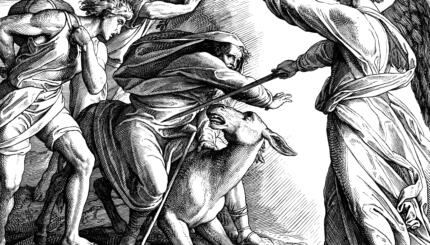The following is a responsum (rabbinic ruling on Jewish law) of the Reform movement’s rabbinical body, the Central Conference of American Rabbis. It differentiates between situations when ceasing treatment is considered euthanasia or assisted suicide — and therefore unacceptable — and those times when a patient is considered already dead and life support may be removed.
QUESTION: What is the Jewish attitude toward a “living will”?
ANSWER: The “living will” provides a legal method for terminating life support systems in the case of individuals who are dying because of serious illness or accident. The pain of family members or friends in comas over long periods of time and in a “persistent vegetative state” while attached to life preserving machinery has led to the consideration of such documents. At that juncture often no one will agree on what should be done. In some occasions the courts have intervened; in others eventually a family member or physician intervenes, but at the risk of subsequent legal action.
Those who wish to spare their family from this agonizing decision may decide on a “living will,” a form frequently used with a proxy designation statement reads as follows:
Living Will Declaration
To My Family, Physician and Medical Facility I,_______________, being of sound mind, voluntarily make known my desire that my dying shall not be artificially prolonged under the following circumstances:
If I should have an injury, disease or illness regarded by my physician as incurable and terminal, and if my physician determines that the application of life-sustaining procedures would serve only to prolong artificially the dying process, I direct that such procedures be withheld or withdrawn and that I be permitted to die. I want treatment limited to those measures that will provide me with maximum comfort and freedom from pain. Should I become unable to participate in decisions with respect to my medical treatment, it is my intention that these directions be honored by my family and physicians(s) as a final expression of my legal right to refuse medical treatment, and I accept the consequences of this refusal.
Signed_________________________________
Date_______________
Witness____________________________
Witness____________________________
Designation Clause (optional*)
Should I become comatose, incompetent or otherwise mentally or physically incapable of communication, I authorize ___________________, presently residing at ________________________ to make treatment decisions on my behalf in accordance with my Living Will Declaration and my understanding of Judaism. I have discussed my wishes concerning terminal care with this person, and I trust his/her judgment on my behalf.
Signed ____________________________________
Date_______________
Witness____________________________
Witness____________________________
*If I have not designated a proxy as provided above, I understand that my Living Will Declaration shall nevertheless be given effect should the appropriate circumstances arise.
The various statutes specifically exclude chronic debilitating diseases, such as Alzheimers, which are not life threatening and attempt to deal with other problems as well.
Suicide & Euthanasia
This approach raises many questions about traditional and modern Jewish perceptions of life and death. Is this akin to suicide or euthanasia? Suicide has always been considered a major sin (A Z 18a; Semahot 2.2; Shulhan Arukh Yoreh Deah 345.2) and even its contemplation was considered wrong. We have also felt that euthanasia is not consistent with our tradition (W. Jacob, ed., American Reform Responsa #78, 79). We may see from the arguments presented in these two responsa that nothing positive may be done to encourage death; however, the “Living Will” is not euthanasia, but an instrument of antidysthanonic.
Our tradition has felt that a goses (dying person) should also not be kept from dying after all hope for recovery has passed, and so the Sefer Hasidim stated that if the steady rhythm of someone chopping wood kept a goses alive, the wood chopping should be stopped (#723; Isserles to Shulhan Arukh Yoreh Deah 339.1).
Some rabbinic statements limit the definition of goses to persons who will not live for more than three days; however modern medical technology has made these limitations obsolete. Earlier biblical statements clearly indicated that no positive acts to abbreviate life even when there was not hope were permitted (I Sam 31.1 ff; II Sam 1.5 ff). In a later age Solomon Eger indicated that medicine should also not be used to hinder a soul’s departure (comment to Shulhan Arukh Yoreh Deah 339.1).
We may then safely say that at the critical juncture of life when no hope for recovery exists the soul should be allowed to drift away peacefully. We have become even more sensitive to issues of euthanasia through our own experiences with the Holocaust.
Love of life in all its forms is very much part of our tradition. Even when conditions of life are rather doubtful and when there might be serious questions about the “quality of life” we cannot encourage euthanasia nor can we make assumptions about “the quality of life.”
Defining Death
The modern development of medicine has brought wonderful cures and provides additional years of life even to those in advanced years. On the other hand, its technology may leave us in a permanent coma or a persistent vegetative state in which we are neither alive nor dead. Such individuals may be completely dependent upon life support machinery. While this is acceptable during periods of recovery, we fear a permanent coma when the mind has ceased to respond and a plateau of mere physical existence has been reached.
When the Harvard criteria of death have been satisfied, life support machinery may be removed. This state of “brain dead” has been defined by an ad hoc committee of the Harvard Medical School in 1968 (Journal of the American Medical Association Vol 205, pp 337 ff). It recommended three tests: (1) Lack of response to external stimuli or to internal reed; (2) absence of movement and breathing as observed by physicians over a period of at least one hour; (3) absence of elicitable reflexes; and a fourth criterion to confirm the other three; (4) a flat or isoelectric electroencephalogram.
The group also suggested that this examination be repeated after an interval of 24 hours. Several Orthodox authorities have accepted these criteria while others have rejected them.
Moses Feinstein felt that they could be accepted along with shutting off the respirator briefly in order to see whether independent breathing was continuing (Igrot Mosheh Yoreh Deah #174).
Moses Tendler has gone somewhat further and has accepted the Harvard criteria. David Bleich and Jacob Levy have vigorously rejected these criteria as they feel that life must have ceased entirely with the heart no longer functioning, a condition belatedly established by the Hatam Sofer in the 18th century (Responsa Hatam Sofer Yoreh Deah #338).
We can see that although the question has not been resolved by our Orthodox colleagues, some of them have certainly accepted the recommendations of the Harvard Medical School committee. We are satisfied that these criteria comply with our concern that life has ended. Therefore, when circulation and respiration only continue through mechanical means, as established by the above mentioned tests, then the suffering of the patient and his/her family may be permitted to cease, as no “natural independent life” functions have been sustained. We would permit a physician in good conscience to cease treatment and to remove life giving support systems.
The Persistent Vegetative State
The “persistent vegetative state” is more difficult as “brain death” has not yet been reached. Such an individual would be considered a goses, who is considered to be a living human being in all respects. One may desecrate the Sabbath to help him according to Jacob Reischer (Shevut Yaakov 1:13), though others (Kenesset Hagadol) disagreed.
The long discussions about a goses indicate that no positive actions to hasten death may be taken, so he/she is not to be moved or his/her eyes closed, etc. As stated above, there is no prohibition against diminishing pain or increasing the person’s comfort or initiating new treatment which will not change the condition of the patient.
Under these circumstances a “Living Will” may be helpful although we realize that we know little of the “inner life” of people in this state; we do not wish to terminate what may still be significant to them.
It would be permissible, according to this point of view, to help and assist those who may need to make these kinds of judgments for us in the future through a “Living Will.” This may be especially important if there is no one present who can be counted on to make an appropriate decision in keeping with our verbally expressed wishes. The document must be worded so that it deals with the “persistent vegetative state” without moving toward euthanasia. The document should be sufficiently recent to assure that it reflects the wishes of the patient.
All of us wish for a reasonable exit from this world and would also like to make that period as bearable as possible for ourselves and our surviving family. The positive outlook on life which governs Judaism prohibits any drastic steps toward death but it does not insist that life continue when the person is a goses. At that point a peaceful release is permitted. The “Living Will” provides one possibility; the appointment of a proxy provide another.
March 1989
Reprinted from the Central Conference of American Rabbis.
Sign up for a Journey Through Grief & Mourning: Whether you have lost a loved one recently or just want to learn the basics of Jewish mourning rituals, this 8-part email series will guide you through everything you need to know and help you feel supported and comforted at a difficult time.
Looking for a way to say Mourner’s Kaddish in a minyan? My Jewish Learning’s daily online minyan gives mourners and others an opportunity to say Kaddish in community and learn from leading rabbis.
Yaakov
Pronounced: YAH-kove or YAH-ah-kove, Origin: Hebrew, Jacob, one of the Torah’s three patriarchs.



